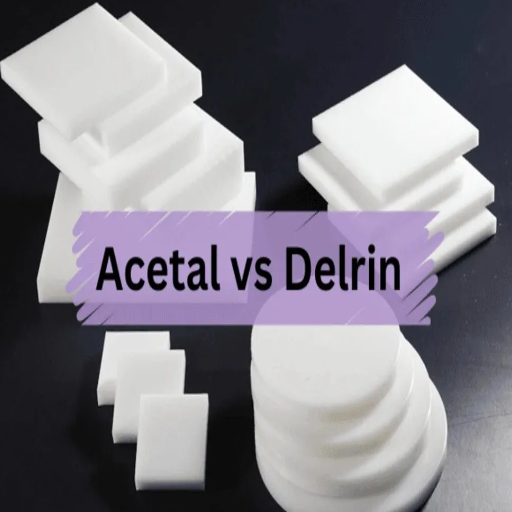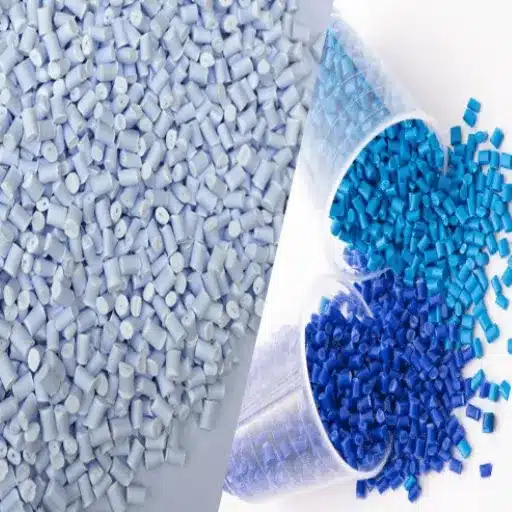Engineering plastics, such as acetal and Delrin, have always been favorites in the industry for their performance and versatility. When designing complex mechanical parts, improving manufacturing processes, or selecting materials that offer durability combined with precision, it is helpful to understand the differences between these thermoplastics and their specific applications. This article aims to unravel the mystery behind acetal and Delrin, explaining their strengths, characteristics, and industrial applications. You’ll thus come away clear and able to make informed choices whenever considering materials for your projects.
Introduction to Acetal and Delrin
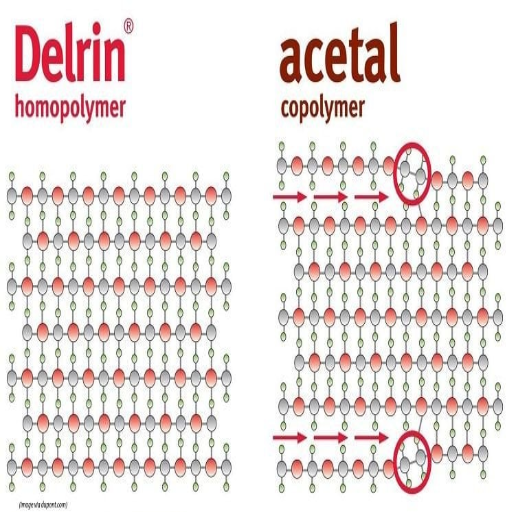
What is Acetal?
Acetal, also known as polyoxymethylene, is a high-performance thermoplastic characterized by excellent strength and rigidity, as well as very low friction characteristics. It is synthetically polymerized from oxymethylene units, which grant the polymer high dimensional stability and resistance to moisture, solvents, abrasion, and other environmental factors. Other names for acetal are polyacetal and polyformaldehyde. Being generally rigid and exhibiting reasonable control over dimensional changes with temperature variations, acetals are often used in precision and heavy engineering applications, where close tolerances must be maintained.
Generally, under varying environmental conditions, acetal retains its structural integrity well, making it frequently used for material applications that require tight tolerances. These components often include gears, bearings, fasteners, and housings in the automotive, consumer goods, and electronics industries. Due to its low coefficient of friction, acetal is used in applications that are subjected to repetitive movements. This polymer can withstand large loads due to its high mechanical strength. Additionally, the material is available in two types of polymerization: homopolymer and copolymer, with the former exhibiting greater strength and stiffness, and the latter offering better resistance to thermal degradation and chemical exposure. This feature gives acetal the advantage of broad applicability for industrial and commercial purposes.
What is Delrin?
Delrin is a registered trademark for a homopolymer acetal resin developed by DuPont with virtually unlimited mechanical properties and dimensional stability. Delrin ranks among the most critical engineering materials due to its low coefficient of friction, excellent wear resistance, and high tensile strength. Due to its wear-reducing capabilities, Delrin provides exceptional wear resistance in applications that require continuous movement, such as gears, bearings, and conveyor systems.
Delrin scores well above the competition in resisting heat up to 257°F (125°C), as well as moisture, chemicals, and solvents. This is beneficial in a severe environment. Since it is lightweight and easily machinable, it can be rapidly manufactured into complex parts with tight tolerances. The automotive, electronics, and consumer goods industries frequently utilize Delrin to create components that require durability, accuracy, and long-lasting performance in their designs. This mix of traits makes Delrin the go-to material for both generic and tailor-made applications.
An Overview of Acetal vs. Delrin
Acetal and Delrin are engineering plastics designated as POM, which have slight differences in performance and areas of use. As a matter of truth, acetal refers to a group of polyoxymethylene resins, whereas Delrin is a registered name for an acetal produced by DuPont. Promoting its reputation, Delrin’s superior homopolymer type offers greater tensile strength and rigidity than its copolymer counterpart, the acetal.
One of the main distinctions lies in the moisture absorption rate. Because Delrin exhibits lower moisture absorption, it has greater dimensional stability in moist environments, making it an attractive option for applications requiring constant precision. Along with Delrin’s excellent finishing and wear resistance, it excels particularly well for components like gears, bearings, and bushings, which require smooth operation and low friction. Conversely, copolymer acetal exhibits superior chemical resistance, thereby resisting degradation in more acidic environments, which makes it more suitable for industries such as chemical processing, where exposure to highly caustic substances is frequent.
From a manufacturing perspective, Delrin, with its homopolymer structure, ensures a highly consistent and precise machining process. In contrast, copolymer acetal is relatively immune to thermal degradation during processing, which enhances its durability in high-temperature environments. Both materials are lightweight and easy to fabricate; however, designs that require extraordinary toughness and the ability to maintain long-term service performance under high levels of mechanical stress typically call for Delrin. Understanding these subtle differences helps one select the right material for a given application, where environmental considerations and mechanical requirements are paramount.
Properties of Acetal and Delrin
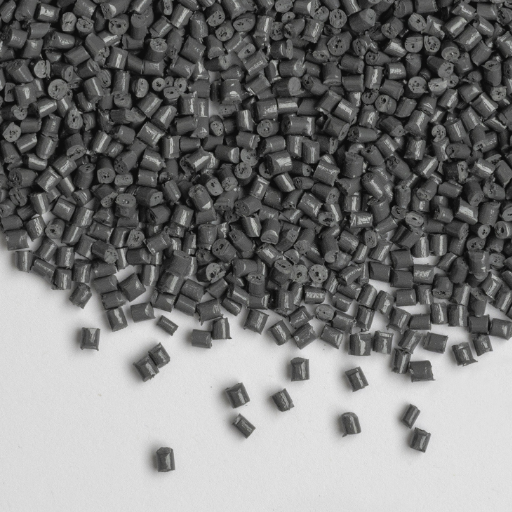
Physical and Mechanical Properties
The two materials, Acetal and Delrin, exhibit remarkable physical and mechanical properties that suit various applications. Both materials are known for their strength, rigidity, and low coefficient of friction. While they have a density of around 1.41 g/cm³, they offer a lightweight option that is fairly harder and suitable for complicated designs requiring precision and resilience. Their tensile strength, which depends on the grade and manufacturer’s specifications, ranges between 60 and 80 MPa. They absorb repeated impacts without cracking or deforming.
Acetal and Delrin are favorable over a wide range of temperatures, with a heat deflection temperature of approximately 105°C to 120°C. This thermal stability ensures that they remain reliable in environments where temperatures tend to fluctuate or rise to elevated levels. These materials also provide excellent dimensional stability, meaning they do not warp when conditions become humid or shrink when dry. Furthermore, their moisture absorbance remains low (typically under 0.2%), giving them an edge in environments where those materials are exposed to moisture.
Their fine quality in resisting wear further seals their application in components that move, such as gears, bearings, and bushings. They serve as their lubricants, thereby lowering friction and increasing their lifespan while extending the lifespan of others they work against. These physical and mechanical features make Acetal and Delrin prime components for automotive, industrial, and consumer applications.
Chemical Resistance and Durability
Acetal and Delrin exhibit a high degree of chemical resistance, enabling them to perform reliably in conditions where exposure to various substances is anticipated. These substances are highly resistant to fuels, oils, solvents, and weak acids, making them vital in extreme conditions. Their structural form remains intact even during prolonged periods of contact with any of these substances, ensuring the continued performance of the materials and eliminating the risk of decline in any way.
In addition, Acetal and Delrin maintain their durability by resisting moisture absorption and hydrolysis. This makes them especially important when long-term exposure to moist or submerged conditions is involved. Their resistance to cracking, warping, and other forms of deterioration further highlights their suitability for severe industrial, automotive, and consumer applications. These properties, therefore, prolong the material’s life cycle and reduce the maintenance frequency required, leading to a cost-effective approach for all engineers and manufacturers to adopt.
Comparison Between Acetal Copolymer and Delrin® Acetal Homopolymer
When comparing the Acetal Copolymer and Delrin Acetal Homopolymer, it is essential to recognize the differences between the substances so that they can be applied practically to meet the specified demand. Both are engineering thermoplastics prized for their strength, durability, and resistance to chemicals, but there are key differences that set them apart.
Mechanical Performance: Delrin Acetal Homopolymer typically exhibits somewhat higher tensile strength and rigidity than Acetal Copolymer, making it suitable for applications requiring high stiffness and structural support, such as gears and precision components. The Acetal Copolymer, however, performs better in resisting damage and supports impact resistance, making it suitable for parts that undergo repetitive loads and bending applications, such as those used in snap-fit assemblies.
Dimensional Stability: Acetal Copolymer maintains dimensional stability well in a high moisture or humid environment due to lesser water absorption than Delrin® Acetal Homopolymer. The latter, however, can expand or warp on prolonged exposure to moisture, which can be detrimental to components in wet or submerged applications.
Thermal Properties: Both materials perform well over a wide range of temperatures; however, Delrin Acetal Homopolymer is known for bearing somewhat higher heat, making it more suitable for high-temperature applications or situations where heat dissipation is crucial. Acetal Copolymer, while still quite capable, is best suited for moderate operating temperatures.
Chemical Resistance: Acetal Copolymer resists the presence of strong acids and bases better than Delrin®, thus extending its usage in situations dominated by chemicals, such as industrial systems or agricultural machinery. Delrin is compatible with hydrocarbons and organic solvents, making it suitable for use in fuel system components.
Wear and Friction: For wear situations in sliding or rotating parts, Delrin Acetal Homopolymer offers the best wear resistance, and its uniform crystalline structure ensures smoother operation in moving assemblies. Acetal Copolymer still performs well under sliding and moving parts, but is less durable over time due to wear.
Cost Considerations: Acetal Copolymer is less expensive compared to Delrin Acetal Homopolymer. For series productions or projects where economic value is crucial without compromising performance, Acetal Copolymer is a suitable alternative.
Although both are crucial in expanding the engineering and manufacturing industries, the choice between Acetal Copolymer and Delrin Acetal Homopolymer depends on the specific requirements of the application, including environmental conditions, mechanical stresses, and budgetary constraints.
Applications in Industry
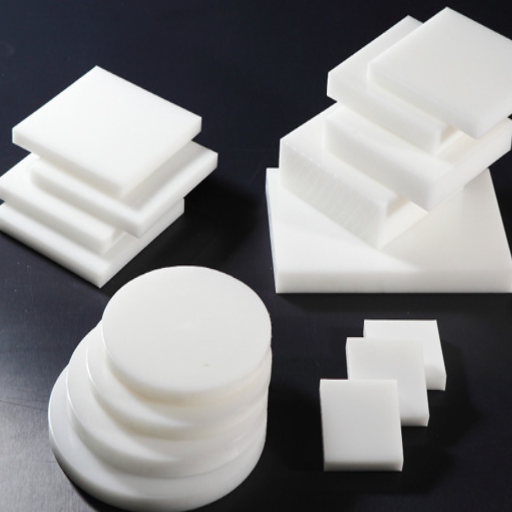
Common Uses of Acetal in Manufacturing
Acetal, with its high strength and superb machinability, is used in the manufacturing of various products. With one of the lowest coefficients of friction and excellent dimensional stability, this material can be used for precision parts that must perform under adverse conditions.
Some of the most essential uses for Acetal are in the automotive industry, where it is used to manufacture fuel system components, gears, and bushings. Such components utilize Acetal’s ability to resist wear and maintain tight tolerances. Similarly, Acetal is widely used for industrial machinery bearings, rollers, and conveyor parts because it provides high durability and requires little maintenance.
The medical and pharmaceutical fields continue to utilize Acetal, employing it to manufacture precision-engineered components for equipment, such as valve components and pump housings. Its compatibility with chemicals and ease of sterilization render it probably the most fitting material for such environments.
Other consumer applications for Acetal include items like zippers, fasteners, and kitchen appliances that require strength with a good surface finish. Its adaptability enables it to be deployed in a myriad of scenarios and continues to support innovative applications in current manufacturing processes.
Delrin Uses in Precision Engineering
Unique combinations of high rigidity, low friction, and excellent dimensional stability make Delrin indispensable in the realm of precision engineering. In applications where gears, bearings, and bushings must be fabricated to tight tolerances and resist wear, this flexible plastic is used on a large scale. Its ability to hold tight tolerances under high mechanical stress is the key to reliable functioning within complex systems. For instance, Delrin gears are used within automotive and industrial machinery, thereby reducing noise and enabling efficient energy transfer among moving parts.
In addition, Delrin’s capacity to withstand repeated stress and absorb moisture makes it suitable for precision components in medical devices and robotics, where materials may be required to resist deterioration over extensive use. It has been demonstrated that Delrin can withstand millions of cycles within rotary or linear slide applications while maintaining consistent functionality.
As manufacturing technologies improve, such as CNC machining and injection molding techniques, the potential for manufacturing intricate, high-precision components out of Delrin continues to grow. The balance between strength, machinability, and long-term reliability positions Delrin as the optimal solution in the domain, allowing the pushing of boundaries in modern precision engineering innovation.
Injection Molding of Acetal and Delrin.
Injection molding of Acetal and Delrin is fabulous for constructing plastic components for high-performance and precision engineering applications. Both materials exhibit very low coefficients of friction, excellent dimensional stability, and high mechanical strength, making them suitable for applications where a solution must be highly reliable and durable. Injection molding capitalizes on the ability to create complex geometries with very tight tolerances, thereby alleviating the need for secondary machining or assembly operations.
Further enhancements in injection molding technology enhance efficiency and precision. Temperature control systems, for example, optimize thermal stability, preventing warping and improving the consistency of the part. Innovative mold designs, coupled with flow simulations, reduce waste and decrease production costs while ensuring that only high-quality products are produced.
Empirical data demonstrate Delrin’s enhanced fatigue resistance and improved creep performance under sustained loads, i.e., features that contribute to increasing the service life and performance of finished parts. Complementing these, Acetal provides the best possible moisture and chemical resistance, making it the first choice in many harsh environmental applications, including automotive fuel systems, industrial machinery, or consumer goods.
With the continuous evolution of industrial demands, Delrin and Acetal materials have proven their worth, enabling manufacturers to meet particular criteria while improving operational efficiency. These stolen properties make the materials a principal member in industries centered on high-precision and long-lasting components.
Understanding the Differences Between Acetal and Delrin
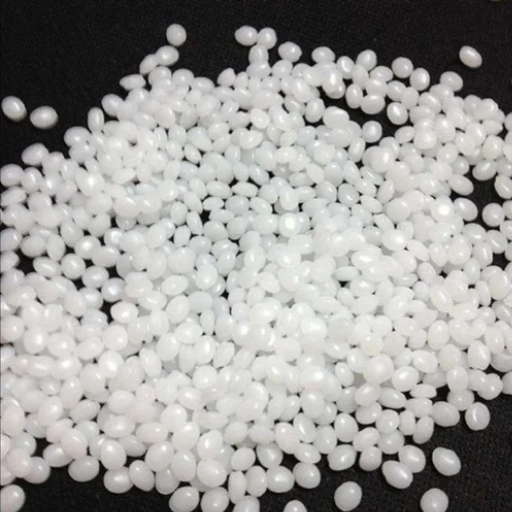
Performance-Related Difference Between Acetal and Delrin
Acetal and Delrin, while broadly similar, display key differences in performance, which shall make the subtle choice of their different applications. Generally, Acetal is regarded as a general-purpose technical plastic that boasts excellent dimensional stability and chemical resistance. Additionally, it serves as a low-friction solution when slight machining of components is required. Typically, it finds applications in gears, bushings, or wear strips that must sustain medium loads and temperatures in some semblance of performance.
In comparison, Delrin, due to its monomeric constitution, significantly enhances performance with improved mechanical strength, stiffness, impact resistance, and property retention. The property comprising high strength and stiffness makes Delrin perform better. High-crystallinity gives Delrin an added edge over copolymer acetals in resisting fatigue. Therefore, it finds critical use in bearing surfaces, conveyor parts, and structural components where fatigue resistance is paramount.
Thermally, it is worth noting that Delrin has a melting point only slightly higher than that of the copolymer acetals; hence, it holds a slight advantage in performance under high-temperature conditions. Delrin also exhibits high creep resistance; hence, it is preferable for long-term usage in load-bearing applications. Delrin fares poorly in resistance to moisture and harsh chemicals when compared to copolymer acetals, as it is of the homopolymer type.
Choosing between Acetal and Delrin, therefore, depends on the specific application. Where cost considerations are paramount and general-purpose applications are sufficient, the Acetal Copolymer material is generally preferred. If, however, the application is discerning and can benefit from high mechanical properties and durability, Delrin is always the advantageous choice for critical industrial and mechanical parts.
Porosity and Material Choice
The porosity, defined as the presence of microscopic voids or gaps in a material, affects its performance in numerous applications. A material with a higher porosity value usually tends to have a lower density and weaker mechanical strength, and is, hence, not preferred in situations involving high stress. Contrastingly, a low porosity is key in lifting the internal strength of a material, its resistance to fatigue, and its dimensional stability. In medical and automotive applications requiring a high degree of resistance to fluids, materials with the least porosity, such as Delrin, would perform best in terms of performance, as they would absorb very little.
Porosity also affects heat and chemical resistance. High porosity may tend to cause heat trapping or chemical penetration, thus compromising the period of the materials in harsh settings. Therefore, very low-porosity materials are selected for pinpoint elegance, presenting critical performance. Additionally, low-porosity materials are preferred by advanced manufacturing systems, such as injection molding and CNC machining, which help reduce production defects.
When analyzing the decision between materials, porosity must be considered with specific application requirements. In fields such as aerospace, automotive, and healthcare, low porosity is often favored, as it maintains the longevity and operational efficiency of the product. Understanding how porosity affects performance will allow better material sorting in terms of environmental challenges and application requirements.
A Project-Oriented Decision Between Acetal vs Delrin
While searching for materials to cultivate your project, it is essential to gain an understanding of their properties and performance differences. Acetal, a general-purpose engineering plastic, offers high stiffness, low friction, and excellent dimensional stability. Delrin, a trademarked name for polyoxymethylene (POM) homopolymer, is a structural material with improved mechanical strength and enhanced fatigue resistance due to its homopolymer structure.
The key differences should be seen more in their composition. Acetal copolymers typically exhibit better chemical and thermal resistance, making them suitable for environments where chemicals or temperatures fluctuate. Delrin, however, with its excellent surface finish, tensile strength, and creep resistance, would stand as the finest choice for these exact parts and heavy-duty applications.
For instance, in the automotive world, Delrin is used to make gears, bushings, and fittings that resist wear and stress over prolonged periods. Acetal copolymers, however, are designed to resist moisture and chemicals, a property that has enhanced their use in plumbing and food processing equipment.
In any case, the choice is based on the particular demands of your use. Through the evaluation of environmental exposure, mechanical stresses, and cost, you will be able to determine the material that offers the best performance and durability for the realization of your project.
Conclusion: Selecting the Right Material

Factors to Consider When Choosing Acetal or Delrin
When choosing Acetal or Delrin, I typically begin with the mechanical requirements of the specific application. Both materials describe great strength, stiffness, and low friction; however, Delrin is marketed as a premium grade of Acetal with enhancements that optimize better dimensional stability and surface finish. I tend to prefer Delrin for applications involving components that require high precision or close tolerances, owing to its better machinability and consistency. On the other hand, if the primary concern is cost, then generic Acetal could quite often serve me well while maintaining the key strength and performance attributes.
Environmental factors come into consideration next. For example, I consider whether the material will be subjected to high moisture levels, chemicals, temperatures, or variations in temperatures. Acetal and Delrin resist these environments, but for the harsher or long-term applications, I tend to rely on Delrin’s marginally better chemical resistance and better fatigue endurance. Furthermore, industry-specific considerations come into play, particularly when I am involved in food processing or medical projects that require certifications, for which Delrin is often more suitable.
From a cost-performance-environment status standpoint, I choose on this basis. Once I am clear about the needs, I can select the material that best matches the synergy of properties for a working solution within budget limits.
Final Thoughts on Acetal vs Delrin
When considering Acetal versus Delrin, I find the choice comes down to the specifics of the application. Acetal offers versatility and cost-effectiveness, making it suitable for general-purpose uses where broad chemical resistance and mechanical stability are required. However, Delrin maintains a greater degree of uniformity and precision, provided by the homopolymer, and therefore becomes the better choice for more demanding applications that require extra strength, durability, or low friction.
From my experience, an understanding of the environmental conditions and mechanical requirements of the project comes first. If, however, the application is subjected to continuous stress at a high level or exposure to harsher environments, Delrin does not perform favorably in terms of performance. Acetal copolymer, on the other hand, is suitable for applications where cost is a significant factor and the performance levels required are relatively low.
After evaluating temperature ranges, load requirements, and chemical exposure, I would be able to know which prospects are more viable for any given project. Whether I choose Acetal for its price or Delrin for its finish and strength, knowing the application allows me to favor one that enhances overall performance at a cost that is agreed upon.
Reference Sources
-
Acetal vs. Delrin®: Their Differences – Xometry
This resource explains cost differences, porosity, and other material properties. -
Acetal vs Delrin: What Are Their Differences – RapidDirect
Highlights tensile strength, structural applications, and key distinctions. -
Delrin vs Acetal – Aztec Plastic
Discusses stiffness, creep resistance, and standard industrial applications. -
What Is the Difference Between Acetal Plastic and Delrin? – Emco Plastics
Focuses on the composition and crystalline structure of Delrin compared to Acetal. -
Acetal Plastic Material Properties – Curbell Plastics
Provides insights into Acetal’s performance characteristics and industrial uses. - View PC Plastic Pellets Manufacturers in China
Frequently Asked Questions (FAQs)
What distinguishes acetal from Delrin?
Perhaps the main difference between acetal and Delrin is in their chemical composition and properties. Delrin is the trademark name of an acetal homopolymer: A homopolymer polyoxymethylene (POM) produced by DuPont. The term acetal, on the other hand, is more general and refers to both homopolymer and copolymer varieties. While both materials exhibit low frictional resistance and excellent fatigue resistance, Delrin typically has superior tensile strength compared to other acetal materials. Knowledge of such details will help you decide which plastic is suitable for your purpose.
How does acetal compare to Delrin?
In some ways, the term “Acetal” means a broader type of material, while “Delrin” is a specific brand of high-grade acetal. General acetal plastic boasts excellent dimensional stability, along with a uniform crystalline structure. However, the properties of Delrin have been modified or improved, sometimes with the addition of additives, to enhance features such as impact resistance or flexural yield strength. Thus, Delrin is better suited for rigorous applications such as gears and other mechanical parts. It will, therefore, depend on the application as to which one might be chosen.
What kind of benefits are offered by general acetal plastics?
General-purpose acetal plastics, including homopolymers and copolymers, have numerous industrial applications and offer several benefits. They exhibit excellent dimensional stability and low friction, making them wear-resistant, which is ideal for parts that require exact specified tolerances. Additionally, these acetal plastics exhibit excellent chemical resistance, which is crucial in the food and medical industries. The resistance to fatigue and the ability to retain mechanical properties under stress also allow their use electrically for the manufacturing of mechanical components, specifically for working with CNC machining.
Can Delrin be used in food and medical applications?
Yes, Delrin’s excellent chemical resistance and low porosity indeed make the material very acceptable for food and medical applications. To ensure that there are specific grades of Delrin that meet the requirements of these industries, exceptional grades such as Delrin AF have been developed. Its low coefficient of friction and high wear resistance make this material very suitable for parts that come into contact with food or medical devices. The most important thing is to ensure that the exact grade of Delrin meets all criteria set for safety and compliance for these uses.
What is the crystalline pattern of acetal and Delrin?
The crystalline pattern of the acetal and Delrin materials plays a vital role in the mechanical aspects of both counterparts. Both materials have a uniform crystalline structure that enhances their strengths and stabilization. Delrin, being a homopolymer, generally exhibits a more uniform crystalline structure than other acetal copolymers. This uniformity yields a high tensile strength and performance under loading conditions higher than those of most other acetals, making it a good fit for applications subjected to high stress, such as gears and industrial applications.
How does fatigue resistance compare between acetal and Delrin?
Fatigue resistance is a crucial factor in determining the use of acetal and Delrin for various applications. Delrin is typically rated better in fatigue resistance than regular acetal, courtesy of its homopolymer structure, which provides extra strength and resilience when subjected to repeated and cyclic loads. Such properties are, of course, of paramount importance when parts will be subjected to repetitive stress, as in machinery and automotive components. Having learned these distinctions will help in proper material choice for engineering needs.

